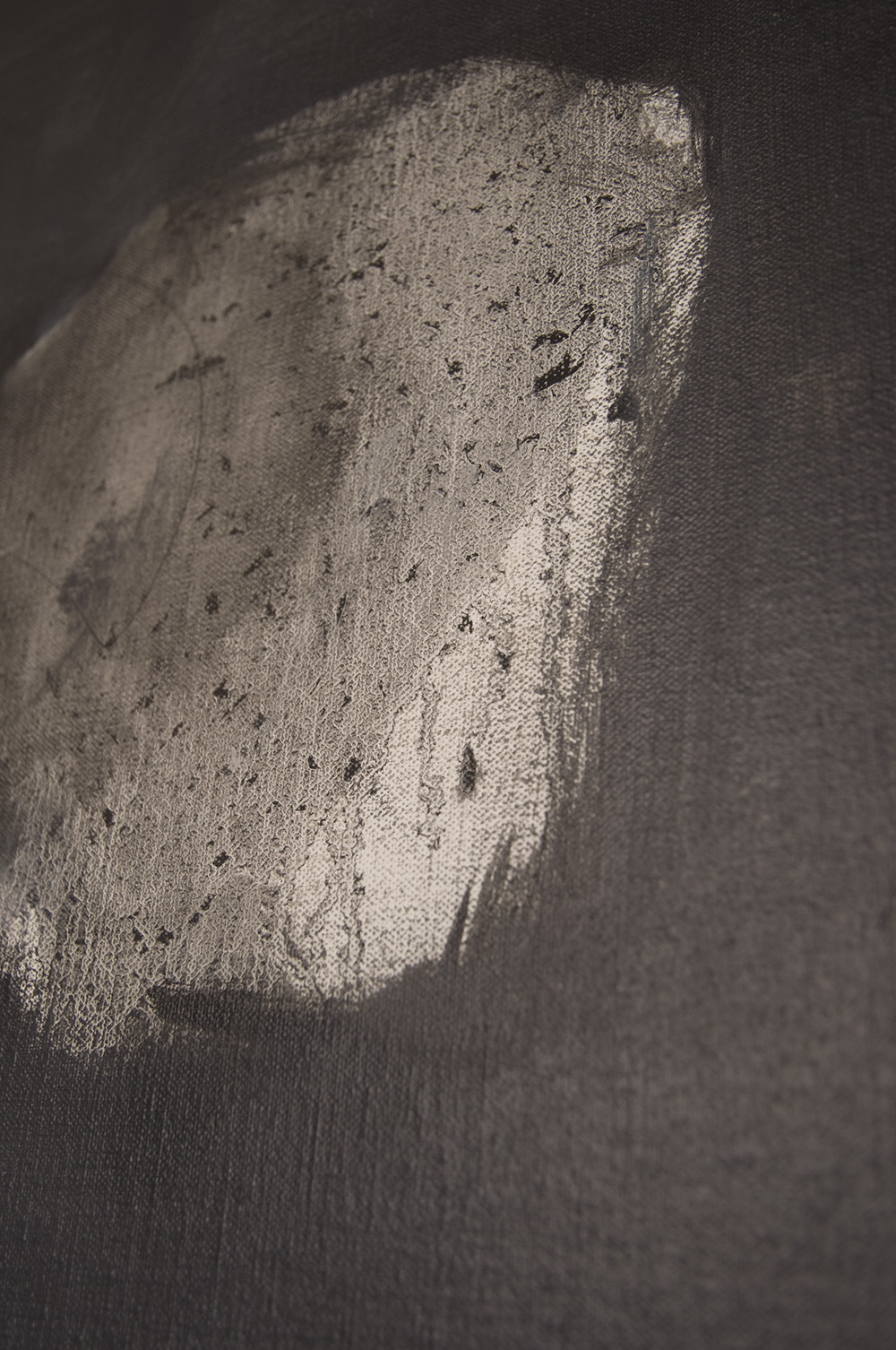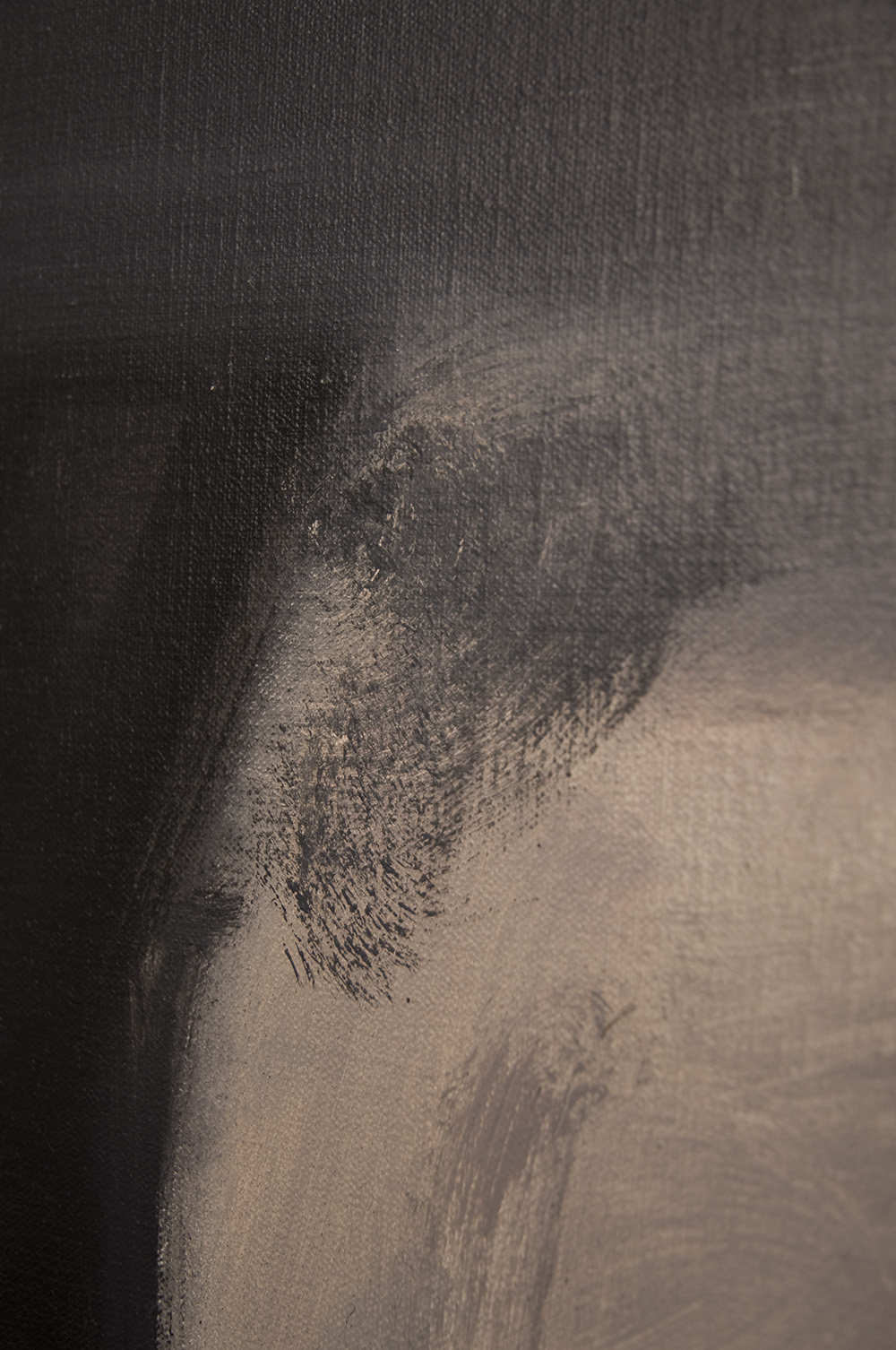Aphrodite
From the serie: “Human parts that remain”
width: 100cm / 3,3′
height: 180cm / 5,9′
Initial Impressions
“Aphrodite” presents a haunting and enigmatic portrayal of the mythological figure. The large canvas, predominantly rendered in dark, almost monochromatic tones, captures a fragmented and abstract vision of the goddess. The minimalistic approach and subdued palette compel viewers to delve deeper into the painting’s layers, both visually and symbolically.
Composition and Technique
The composition of “Aphrodite” is stark and minimalist. The artist uses a restrained color palette, primarily consisting of deep blacks and muted grays, with occasional flashes of lighter tones that highlight the figure’s partial form. This approach draws attention to the ethereal and elusive nature of the subject.
The brushwork is delicate yet confident, with soft, almost ghostly strokes that create an impressionistic outline of Aphrodite’s body. The lack of detail forces the viewer to focus on the essence rather than the explicit form, invoking a sense of mystery and introspection.
Symbolism and Interpretation
Aphrodite, the Greek goddess of love and beauty, is typically depicted in vibrant and sensuous imagery. However, this representation diverges from tradition, presenting a more introspective and subdued vision. The fragmented form can be interpreted as a commentary on the complex nature of beauty and love—elusive, transient, and often fragmented by human experience.
The dark, almost void-like background might symbolize the unknown or the subconscious, suggesting that true beauty and love are found within the depths of the soul rather than in external appearances. The solitary, incomplete form of Aphrodite may reflect the fragmented nature of identity and the search for wholeness.
Emotional Resonance
The emotional impact of this piece is profound. The somber tones and ghostly form evoke feelings of melancholy and contemplation. The abstraction invites viewers to project their own interpretations and emotions onto the canvas, making the experience deeply personal and introspective.
The incomplete depiction of Aphrodite, with only part of her form visible, could evoke a sense of loss or longing. It suggests that beauty and love, much like the goddess herself, are often perceived in glimpses and fleeting moments, never fully grasped or understood.
Conclusion
“Aphrodite” is a powerful and thought-provoking piece that challenges traditional representations of the goddess of love and beauty. Through its minimalist composition and evocative use of color and form, the painting explores deeper themes of identity, beauty, and the human condition. It invites viewers to engage with the work on a personal level, reflecting on their own experiences and perceptions. This piece stands as a testament to the artist’s ability to convey complex emotions and ideas through subtlety and abstraction, making it a significant and memorable work in contemporary art.










